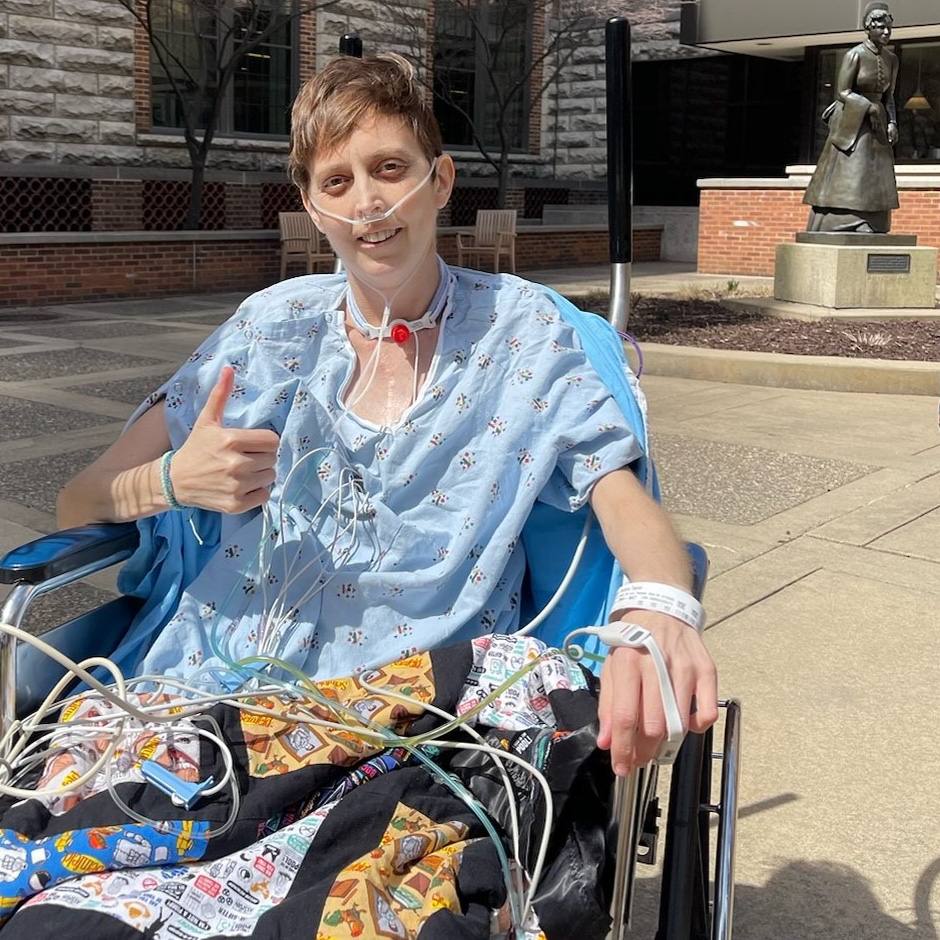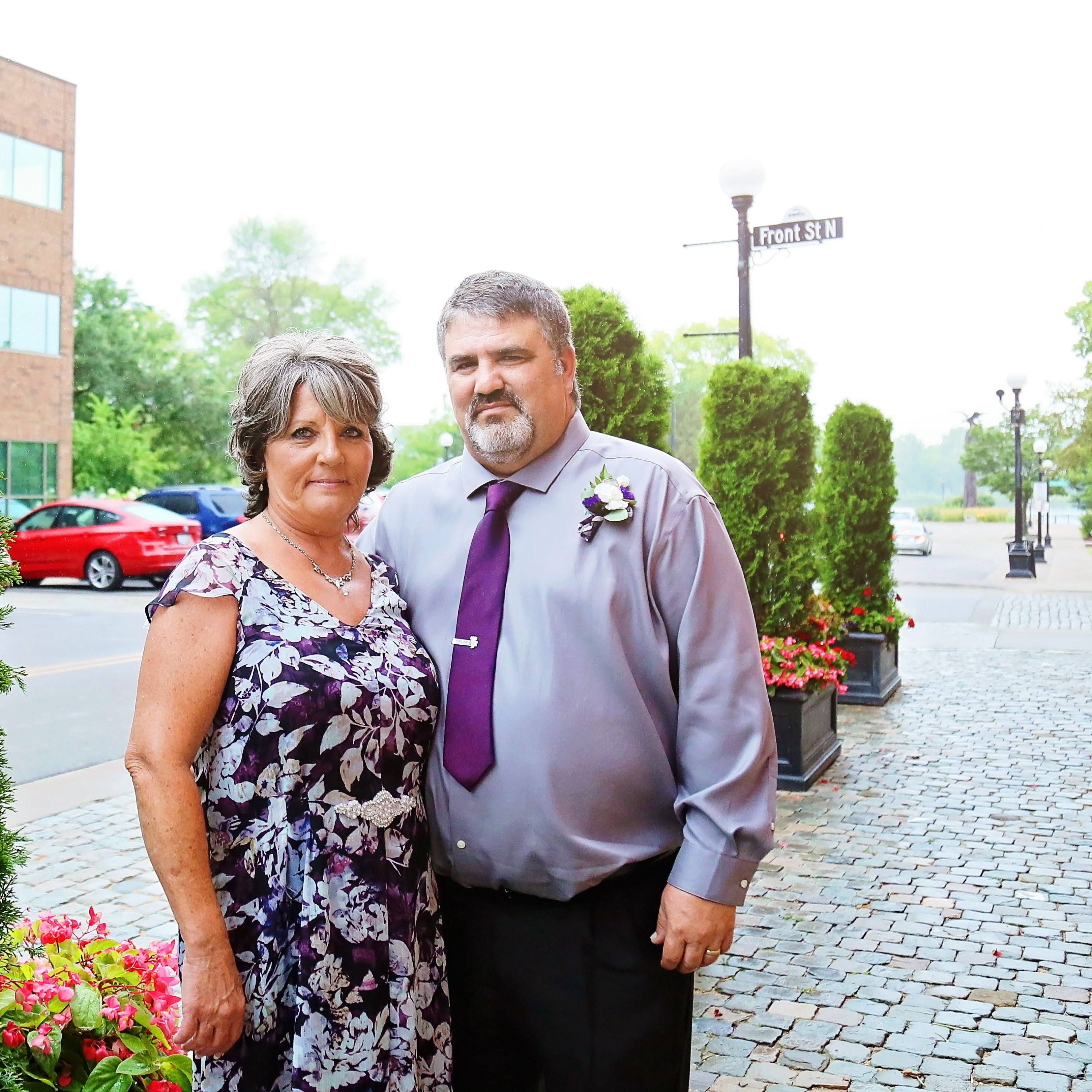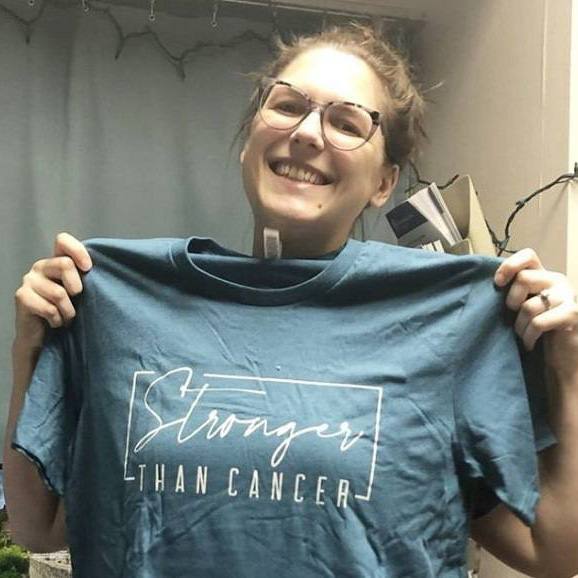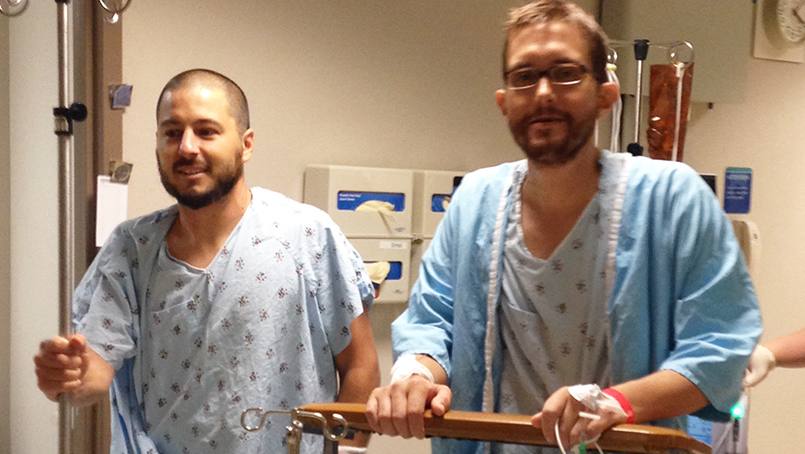 Isaac Jackson was living a peaceful life, with a large, loving family, a successful law practice, and lifelong friends, when in early 2014, his life changed dramatically.
Isaac Jackson was living a peaceful life, with a large, loving family, a successful law practice, and lifelong friends, when in early 2014, his life changed dramatically.
In January, Isaac began feeling sick whenever he ate. A visit to his primary care doctor in his hometown of Eugene, Oregon, led to an initial diagnosis of gallstones. But when an MRI of Isaac’s abdomen showed that the entire right side of his liver was no longer working and his bile ducts were almost completely blocked, his physician promptly connected him with specialists in Seattle.
“We were scared but thought that I was suffering from some sort of bile duct disease. We were hopeful,” Isaac recalls. “Unfortunately, our worst fears came true, and it put our family to the test. How would we respond? Would we stay hopeful? Would we be grateful for what we had?”
Uncovering an alarming diagnosis
Isaac’s life as a partner in a law firm, volunteer soccer coach for two of his four children, and husband to Erin, his wife of 14 years, suddenly seemed fragile. His condition was affecting him on a daily basis, causing extreme itchiness, jaundice, loss of mental function, tiredness and loss of appetite.
In search of answers and treatment, Isaac met with the doctors in Seattle, where he was diagnosed with a chronic liver disease called primary sclerosing cholangitis, or PSC, a disorder that creates scar tissue and damage in the liver. Doctors cleared out Isaac’s bile ducts, which helped eliminate his itchiness and jaundice. He returned home ecstatic. He had a huge party with friends and family celebrating that he did not have something more serious, like cancer.
“My conversation with the doctor quickly turned to transplant. It was good news because it was hope. It was an option for a cure. The only option.” — Isaac Jackson
The following Monday morning, however, Isaac received a call from the medical team in Seattle. The official diagnosis based on his lab work showed Isaac had a form of bile duct cancer called hilar cholangiocarcinoma. His doctors believed that the cancer was likely the real cause of the damage to Isaac’s liver. There was no hope of surgery or radiation therapy because both types of treatment would destroy the liver.
“My conversation with the doctor quickly turned to transplant,” Isaac says. “It was good news because it was hope. It was an option for a cure. The only option.”
Proposing an innovative solution
After informing Isaac that they could not operate to remove the tumor, his medical team in Seattle referred him to Mayo Clinic.
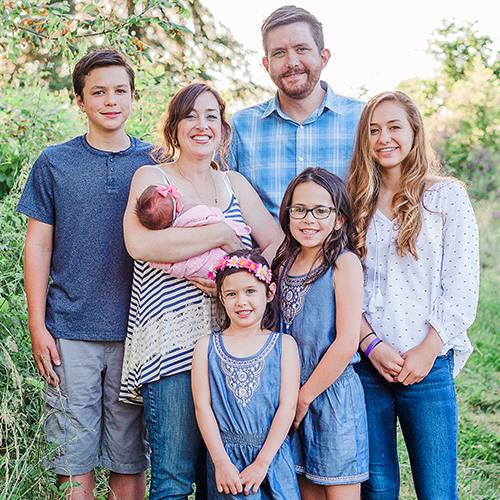 “Mayo Clinic called and said they wanted to see me, but I had to meet a full battery of tests to even become eligible for a transplant — whether from a living or deceased donor,” Isaac says.
“Mayo Clinic called and said they wanted to see me, but I had to meet a full battery of tests to even become eligible for a transplant — whether from a living or deceased donor,” Isaac says.
Isaac and Erin prepared for a week-long trip to Mayo Clinic's Rochester campus for evaluation and testing. He learned within that week he was a candidate for a liver transplant and, potentially, a cure. But Isaac's case was not simple. According to Julie Heimbach, M.D., a Mayo Clinic transplant physician and member of Isaac’s care team, his case was complicated by the size and location of his tumor. Because of that and the underlying condition, Isaac’s tumor would require a unique approach.
Fortunately, Mayo Clinic had pioneered a treatment protocol for people with hilar cholangiocarcinoma that relies on a combination of aggressive radiation therapy and chemotherapy to reduce the size of the tumor and kill any surrounding cancer cells, followed by a liver transplant. According to Dr. Heimbach, the transplant is necessary because the liver becomes severely damaged from the cancer and the high-dose radiation therapy, and is unable to function.
“I was having the symptoms of liver failure, and it was progressing very rapidly,” Isaac says. “Although I was on the list for a deceased donor organ, the doctors said it could take a year and a half before I received an organ, and they didn’t think I would make it that long. That meant my best chance — and maybe really my only chance — for survival was a living-donor transplant.”
Living donors are an option for liver transplants because the liver is one of the few organs in the body that can regenerate itself. That means a portion of a liver can be removed from one person and placed in someone else who needs a new liver. After transplant, both livers regrow to full size within a few weeks.
Greeting life with gratitude
Many family members and friends quickly came forward to be screened in hopes of finding a donor for Isaac. Ultimately, it was Isaac’s brother-in-law, Garrett, who turned out to be a perfect match.
“I wanted to donate (a part of) my liver to Isaac because he’s my best friend and my brother, and I love him, and I couldn’t imagine this world without him,” says Garrett.
“Making the decision to become a living donor is an extraordinary thing because you are making the decision to put yourself in harm’s way in order to save someone else’s life.” — Julie Heimbach, M.D.
Isaac and Garrett went in for their surgeries on June 18, 2014. The procedure and the treatment approach were a success. Both Isaac and Garrett recovered quickly, and today, both are doing extremely well.
“I’m down to one medication a day and I feel great,” Isaac says. “I’ve been able to get back to doing all the things I loved, including coaching my kids’ soccer team, which was an emotional and awesome experience. I even completed a 5K with my oldest daughter and brother last spring. It was tough, but it was a blast.”
Isaac and his family also took a cross-country road trip after his surgery, visiting 20 states along the way. He returned to his law practice eight weeks after his transplant. As for the future, Isaac has big plans.
“I don’t ask why this happened to me. I want to be grateful for what I do have,” he says. “I keep getting stronger, and keep passing my blood tests and scans, and I plan to do more of what I love: coaching, playing, working and being with my family.”
In addition, Isaac is training for the Eugene half-marathon, which he hopes to finish with Dr. Heimbach by his side.
None of it would have been possible were it not for the living-donor liver transplant.
“Making the decision to become a living donor is an extraordinary thing, because you are making the decision to put yourself in harm’s way in order to save someone else’s life,” says Dr. Heimbach.
And that’s a decision for which Isaac and his family are eternally grateful.
HELPFUL LINKS
- Learn more about liver transplants and living-donor transplants.
- Read about the Mayo Clinic Transplant Center.
- Consider becoming an organ donor.
- Connect with others talking about living and giving in the Transplant group on Mayo Clinic Connect.
- Learn more about living donation on Mayo Clinic Connect.
- Explore Mayo Clinic’s campus in Rochester, Minnesota.
- Request an appointment.
Related Articles
